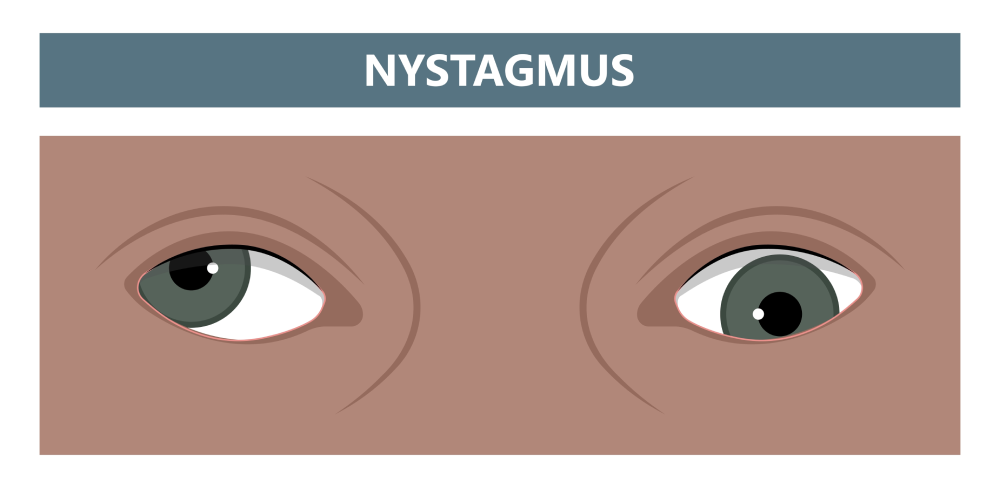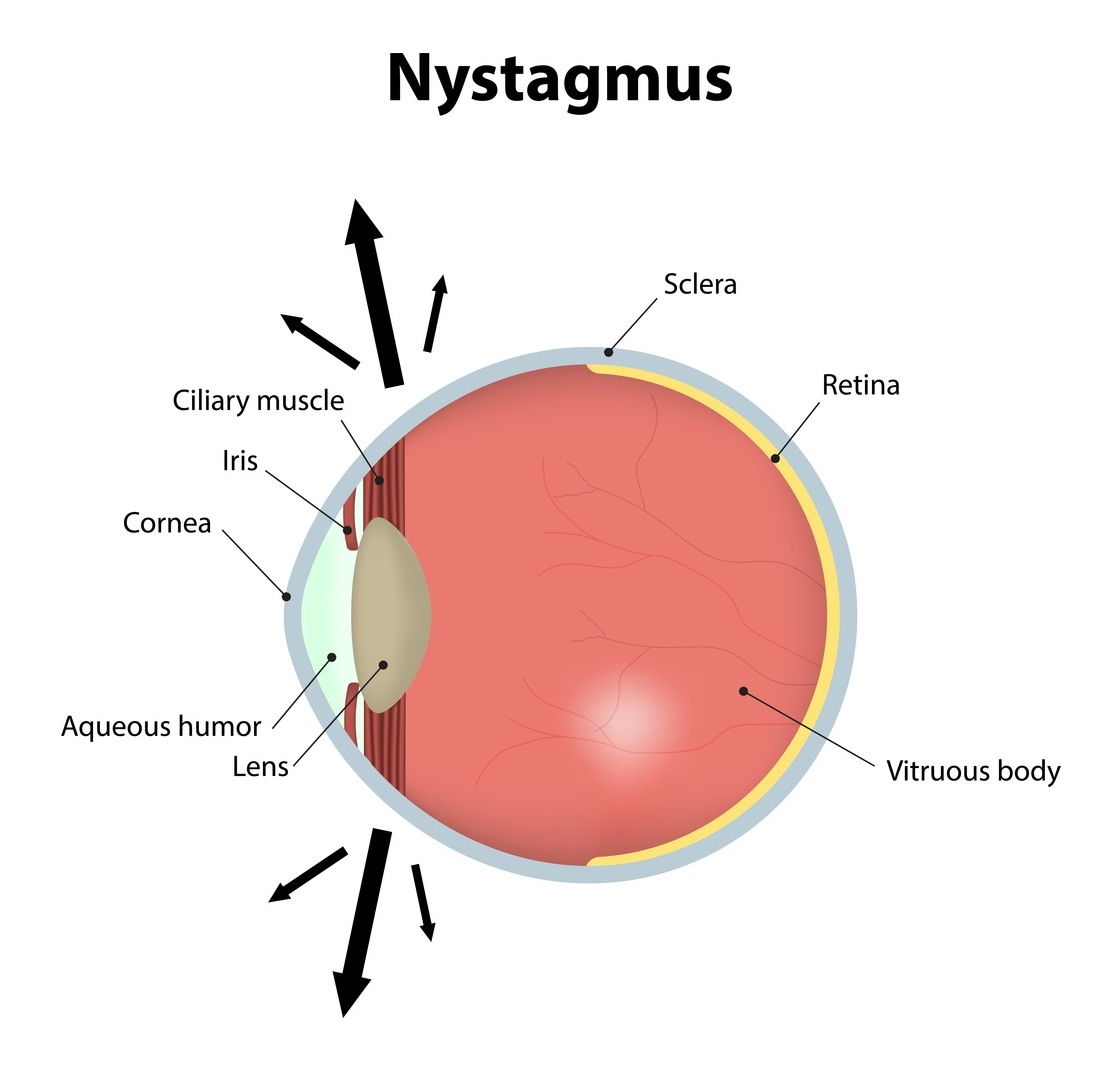Nystagmus, a term not commonly heard in everyday conversation, plays a pivotal role in eye movements. This article will delve into the intricate world of involuntary eye movements, exploring the various facets and shedding light on the perplexing nature of it.
Contents
What is Nystagmus?
It refers to the rhythmic, repetitive movement of the eyes, which can occur horizontally and vertically. This involuntary eye motion can be challenging to comprehend, considering its burstiness and suddenness.
Types of Nystagmus
Here are some common types of this disease:
Congenital
Often present from birth, congenital type raises questions about the factors contributing to its onset. We explore the mysteries surrounding congenital type and its impact on visual perception.
Acquired
Acquired type, appearing later in life, demands attention due to its potential association with underlying health conditions. We uncover the intricacies of acquired type, examining its causes and manifestations.
Physical and Mental Challenges
Constant movement, whether the person’s own motion or surroundings, can pose physical and mental challenges for individuals with nystagmus. Here’s an overview of how constant movement can affect them:
Visual Instability
This disease causes continuous, involuntary eye movements, leading to difficulty maintaining a stable gaze. Constant movement in the environment or while in motion can exacerbate visual instability, making it challenging to focus on stationary objects or navigate smoothly.
Reduced Visual Acuity
The rapid eye movements associated with this disease can result in reduced visual acuity. Continuous motion may further compromise the ability to see details clearly, affecting tasks that require visual precision, such as reading or recognizing faces.
Balance and Coordination Issues
Constant movement can impact the individual’s sense of balance and coordination. Nystagmus may already affect spatial awareness, and external motion can contribute to a feeling of dizziness or unsteadiness, maybe making falls more likely.
Fatigue and Eye Strain
The effort required to compensate for the continuous eye movements can lead to fatigue and strain. Prolonged exposure to a moving environment or engaging in activities with a lot of motion may intensify these symptoms, impacting overall well-being.
Difficulty Concentrating
Mental challenges may arise as individuals with this disease expend extra cognitive effort to cope with the visual disturbances caused by constant movement. This can lead to difficulties concentrating on tasks and may impact cognitive performance.
Emotional Impact
Dealing with the physical challenges of constant movement can also have emotional consequences. Frustration, anxiety, or stress may arise as individuals navigate an environment that can be visually disorienting and demanding.
Social Implications
Constant movement can make social interactions more challenging for those with nystagmus. Difficulty maintaining eye contact and potential social stigma may contribute to feelings of self-consciousness or isolation.
Management and Coping Strategies
Individuals with this disease often develop adaptive strategies to manage these challenges. These may include using head movements to stabilize vision, selecting environments with less visual stimuli, and employing assistive technologies like magnifiers or screen readers for tasks requiring visual acuity.
It’s important to note that the impact of constant movement on individuals with nystagmus can vary, and supportive measures, including regular eye exams and tailored interventions, can contribute to improved quality of life.
Living with this disease presents unique challenges in daily activities, from reading to driving. We explore the hurdles individuals face and offer insights into overcoming these challenges.

In the journey of navigating this type of eye condition, support systems, and communities play a vital role. We shed light on the importance of connecting with others who share similar experiences and the impact it can have on emotional well-being.
FAQs
What causes congenital nystagmus?
This disease, characterized by involuntary eye movements, can stem from various factors. Genetic predisposition sometimes plays a role, where individuals may inherit the condition from their parents. Additionally, neurological conditions or abnormalities during eye development, such as issues with the optic nerve or parts of the brain controlling eye movements, can contribute to it.
Is there a cure for acquired nystagmus?
Acquired type, which develops later in life, lacks a universal cure. Effective management revolves around addressing the underlying cause, which could range from neurological disorders to medication side effects. Depending on the specific case, treatment strategies often focus on alleviating symptoms and enhancing quality of life through physical therapy, medications, or surgical interventions.
How does nystagmus affect daily life?
Its impact on daily life can be substantial. Activities like reading may become challenging due to the constant eye movements, and tasks requiring steady vision, such as driving, can be affected. Social interactions may also be influenced, as maintaining eye contact might be difficult. Coping mechanisms and adaptive strategies, such as using larger font sizes or relying on audio cues, may be employed to navigate these challenges.
Are there support groups for individuals with nystagmus?
Numerous support groups and communities exist to create a network for individuals grappling with it. These platforms are invaluable resources for sharing personal experiences, exchanging advice, and fostering a sense of community. Joining these groups can offer emotional support and practical insights, helping individuals cope with the challenges of living with it.
Can this disease be prevented?
Preventing it may not always be feasible, but symptom management can be greatly aided by early detection and treatment. Regular eye examinations play a crucial role, especially in cases with a family history of it or other eye conditions. Timely identification of potential causes and appropriate intervention, such as addressing genetic predispositions or managing underlying conditions, can help mitigate the impact of it and enhance overall eye health.
Conclusion
In conclusion, understanding the intricacies of nystagmus involves acknowledging its burstiness, perplexity, and specificity. As we unveil the mysteries surrounding involuntary eye movements, it becomes evident that a comprehensive approach is necessary for awareness and support. Make an appointment if you have any special condition regarding your eyes.

